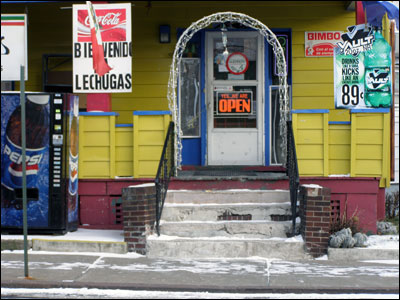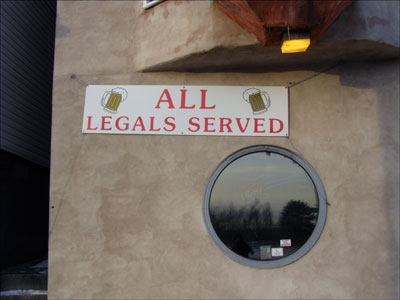
Mention monster trucks, cheap beer, trailer parks, and NASCAR races, and the term “white trash” inevitably comes to mind. Some people, including those who would not dream of describing a racial minority with an epithet, might even say the classist phrase aloud. While some self-caricaturists have reclaimed and defanged the slur, in many circles, people still use it to suggest their separation from a so-called lower class.
In Not Quite White: White Trash and the Boundaries of Whiteness (2006: Duke University Press), Matt Wray traces the history of the term “white trash” from its origination in the colonial-era South. Inspired by his own impoverished upbringing, Wray — who is white — explores the concept of “white trash” and the reason the epithet remains powerful more than a century after its first recorded use.
Wray, a sociology professor at the University of Nevada, Las Vegas, argues that the status of middle-class whites at the turn of the 20th century relied in part on their categorizations of lower-class whites as “white trash,” derived from its inception as a derisive term among blacks in the pre-Civil War South.
Class scapegoating is not the only reason the epithet outlasted its predecessors. According to Wray, the unusually compelling term derives its power from the tension created by juxtaposing “white” — with all its connotations of racial superiority — and “trash,” which is valueless and disgusting.
“But why white trash? Split the phrase in two and read the meanings against each other: white and trash,” Wray writes in the introduction. “Slowly, the term reveals itself as an expression of fundamental tensions and deep structural antimonies: between the sacred and the profane, purity and impurity, morality and immorality, cleanliness and dirt. In conjoining such primal opposites into a single category, white trash names a kind of disturbing liminality: a monstrous, transgressive identity of mutually violating boundary terms, a dangerous threshold state of being neither one nor the other … This is no ordinary slur.”
In fact, argues Wray, the term “white trash” evolved out of two other colonial-era slurs — “lubber” and “cracker.” One of the earliest descriptions of the poor rural whites known as lubbers occurs in the writings of William Byrd, a legislator in colonial Virginia who went on a surveying trip to settle a boundary dispute with North Carolina. According to Byrd, lubbers affronted respectable whites not only by being destitute, but also by disregarding conventional morality, social boundaries, and gender roles. In the diary of his journey, which Wray quotes, Byrd depicted lubbers as idle men content to leave strenuous labor to their industrious wives. In Byrd’s account, lubber men interacted openly and closely with blacks and American Indians, a habit rare among elite whites at the time. Lubber women, to Byrd, were notable for their sexual availability to high-status white men. Byrd went on to describe these poor whites as sick-looking and lazy, characteristics that would be associated with “white trash” for centuries to come.
Crackers shared with lubbers a tendency to laziness, but were construed as bragging, nomadic, mean-spirited outlaws who stole from American Indians and wealthy whites. When charged with theft, crackers blatantly defied agents of both law enforcement and government.
For a while, “cracker” and “lubber” were used prevalently to describe poor Caucasians, but “white trash” eclipsed them before the Civil War, says Wray, who attributes the first recorded use to an English actress and abolitionist who included it in an 1835 account of her tour of the United States. “… the greater proportion of domestics being slaves, all species of servitude whatever is looked upon as a degradation; and the slaves themselves entertain the very highest contempt for white servants, whom they designate as ‘poor white trash,’” wrote Fanny Kemble in her journal.
“White trash” both reflected and created class- and race-based contempt. After white domestic workers gained the right to vote when the franchise was extended to non-landholders in the 1820s, enslaved Africans used the term to express their disdain for their fellow servants.
“This historical situation suggests the likelihood that blacks, in labeling white servants poor white trash, were reacting with resentment and hostility to white domestics’ claims to superiority. They were, after all, doing similar if not identical kinds of work, but the shifting political landscape meant that white servants, despite their immigrant status, could demand and reasonably expect to be granted limited privileges over blacks,” Wray writes.
The term then entered the mainstream through the printed word, and was perpetuated by higher, literate classes as a means to oppress the lower class. Expanding printing operations in the 1850s meant more books for those in the middle class or above, including volumes reflecting on the social landscape of the young country. Authors discussing class disparities in the South explained the condition of poor whites differently, depending on the writers’ views of slavery. For abolitionists, those who fell into the “poor white trash” category were victims of an immoral system: Not only did slavery oppress those enslaved, but it also forced poor whites, who had to compete against a captive population forced to work for free, to live in poverty. By contrast, authors who supported slavery argued that poor whites’ biological predisposition to laziness and immorality made their penury inevitable. Proslavery writers noted that “white trash” lived in northern states as well, so the forced labor system could not be to blame.
The written debate over why whites were not living up to commonly held expectations for their race brought the phrase and concept of “white trash” to a wider audience, and cast it as a national issue, Wray explains. Out of the initial divisions over whether poor whites’ existence had become degraded due to biology or circumstance evolved an even more sinister debate over how to deal with their problem.
“White trash” became targets of eugenics researchers advocating involuntary sterilization and hookworm crusaders seeking to rid them of the “germ of laziness.” Eugenics research led to a chilling 1926 Supreme Court ruling that upheld a law that allowed Virginia to involuntarily sterilize an 18-year-old, “feebleminded,” unwed mother to prevent the birth of generations of destitute criminals. “The strength of the sterilization movement in the United States was such that by the early 1930s, eugenics reformers routinely performed involuntary sterilization (ovariotomies for women and vasectomies or castration for men), believing it to be the only sure way to stop the propagation and proliferation of the ‘unfit,’” writes Wray.
Another group of researchers opposed the prevailing wisdom that poor whites’ biology made them destined for degeneracy. These “anti-hookworm” advocates argued that the unhealthy complexions and sluggish habits associated with “white trash” stemmed not from genetic inferiority, but from a parasitic illness acquired by walking barefoot in areas where human feces containing worm eggs frequently mixed with the soil. These “advocates” presented shoes and outhouses as solutions to what they argued was an environmental, not a hereditary, problem.
Unfortunately, Wray concludes his history of “white trash” here. Although he skillfully traces the term “white trash” into the early 20th century, he fails to explore the more recent history that could illuminate how the term helps create and perpetuate class divisions today. Also missing are first-person accounts, such as the memoir of trailer park life that opened White Trash: Race and Class in America (1996: Routledge), a collection of essays coedited by Wray. In spite of its limited historic and narrative scope, Not Quite White offers valuable insight into a term that is still disturbingly common in American English. Understanding the genesis of the slur might be the first step toward making it as taboo as other racist epithets we’ve come to despise.
- Follow us on Twitter: @inthefray
- Comment on stories or like us on Facebook
- Subscribe to our free email newsletter
- Send us your writing, photography, or artwork
- Republish our Creative Commons-licensed content





